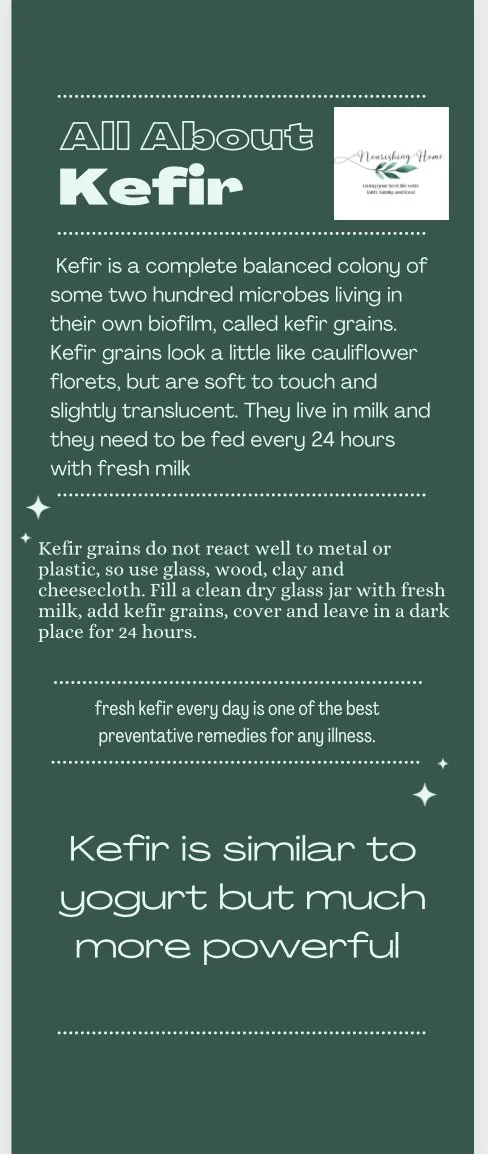All about Kefir
I’ve been making kefir on and off for over 10 years. I didn’t always understand how to consume it, and why I needed to continue this “hobby”, so I thought I would share with your some amazing health facts of Kefir!
Kefir is similar to yogurt but much more powerful.
Its origins, folklore and history make fascinating reading.
Kefir is a complete balanced colony of some two hundred microbes living in their own biofilm, called kefir grains.
Kefir grains look a little like cauliflower florets, but are soft to touch and slightly translucent. They live in milk and they need to be fed every 24 hours with fresh milk. If they are looked after well, they multiply quite quickly, producing more kefir grains, which can be shared with friends and neighbors.
No laboratory in the world can make kefir: it is hundreds of years old and has been passed from person to person down to modern times.
Some manufacturers dry kefir grains and turn them into powder, which is sold as a kefir starter. But the best kefir starter is the live grains, which you can get online or from somebody nearby, who makes kefir for their own family and can share a few kefir grains with you.
Kefir contains a balanced stable community of microbes (fungi, bacteria, viruses, etc) it is powerful natural medicine for the digestive system, fungal overgrowth (thrush) anywhere in the body, skin problems and other maladies.
Kefir stimulates and rebalances the immune system, balances the gut flora and microbial flora elsewhere in the body, and makes milk more nourishing and much easier to digest.
You don’t need to pasteurize, boil or even warm up the milk for making kefir, it will work at any room temperature from warm to quite cold.
Kefir grains will stay alive in the fridge for months, so they can be stored when you are away, as long as they are covered by plenty of fresh milk.
Any microbes living in milk cannot stand up to kefir, so you do not need to sterilize the milk, no matter whether it is raw or pasteurized.
Kefir grains do not react well to metal or plastic, so use glass, wood, clay and cheesecloth. Fill a clean dry glass jar with fresh milk, add kefir grains, cover and leave in a dark place for 24 hours.
A cup of fresh kefir every day is one of the best preventative remedies for any illness.
Kefir does miracles for those who are prone to diarrhea.
Kefir is lactose free.
Kefir is easy to digest as it contains galactose. Galactose is a monosaccharides or monosugar so can easily penetrate the gut lining.
In the GAPS Protocol, after yogurt has been introduced then kefir is introduced.
Kefir produces a more pronounced die-off reaction because it is causing pathogenic bacteria and yeast to die, thus a “die off”.
Kefir contains these beneficial yeasts (as well as the beneficial bacteria) which help to take pathogenic yeasts under control.
Regular consumption of kefir will speed up the fungal stage of cleaning the body.

